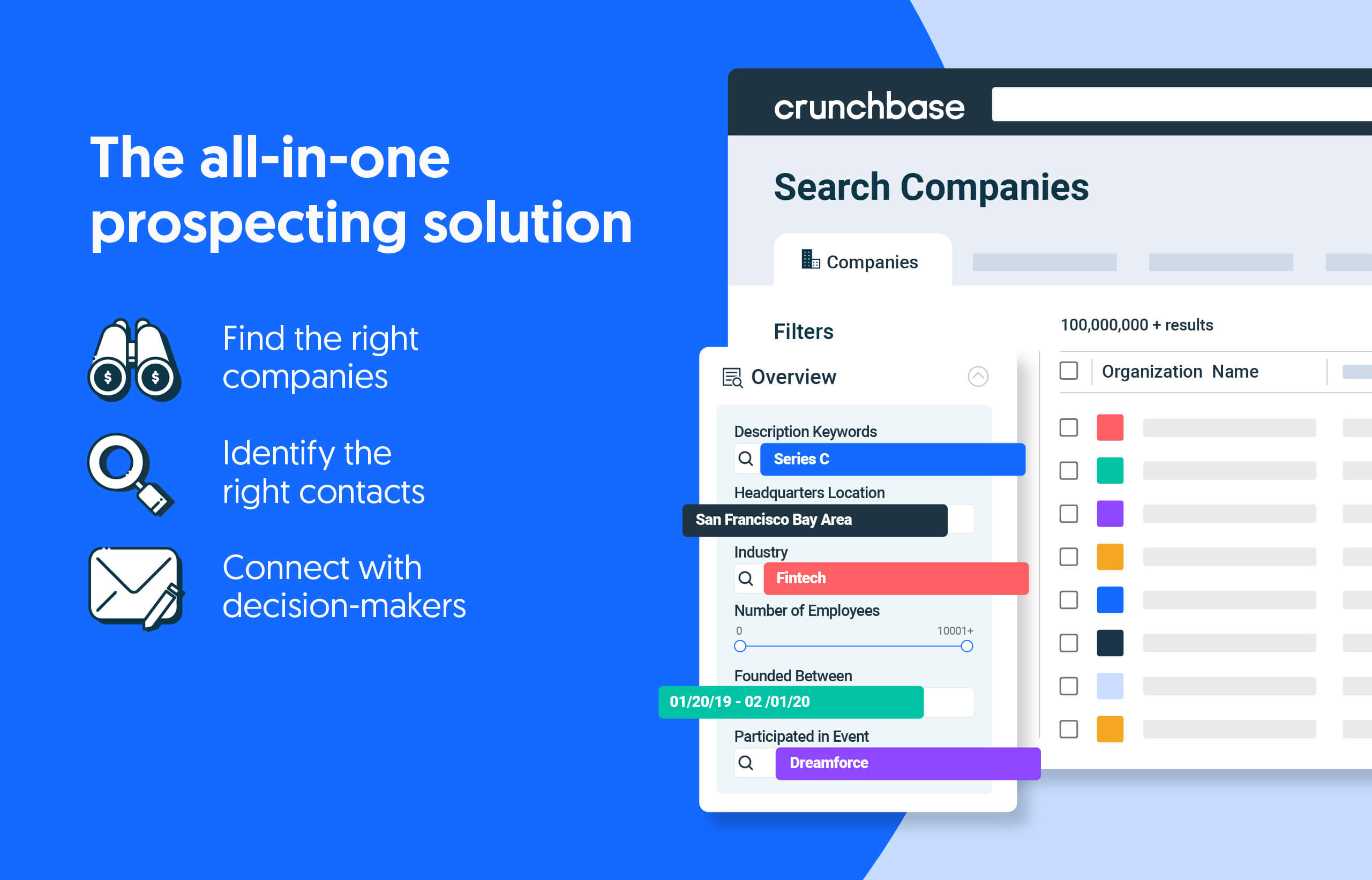U.S. seed startups have been the least affected by the venture funding downturn. But these companies are competing in a more crowded field than ever for investor attention and will likely have to wait longer to raise their Series A rounds — if they’re able to at all — an analysis of Crunchbase data shows.
Search less. Close more.
Grow your revenue with all-in-one prospecting solutions powered by the leader in private-company data.
To paint a clearer picture of the state of the U.S. seed market, let’s break it down into three charts.
Seed funding slows after peak
Quarterly seed funding peaked in the U.S. in the first quarter of 2022, Crunchbase data shows.
It took the better part of that year for the slowdown to reach seed. By the third quarter of 2022, seed amounts were flat year over year — still high since seed was up in 2021 — and then slowed in the fourth quarter from 2021 heights, and dipped further in Q1 2023.
Despite the slow quarter-over-quarter downward roll since the Q1 2022 peak, seed funding is still above 2020 amounts and has weathered the downturn better than all other stages.
This might lead you to believe that seed-stage companies have an advantage compared to all other stages of funding. It’s true that seed startups are less encumbered by the outsized valuations that later-stage startups are struggling with.
It’s also true that seed-funded startups always face an uphill battle, even in the best of circumstances: Failure rates for startups at this stage range from 50% to 90%, depending on whose projections you believe.
That said, even though it was the most robust funding stage in 2022, the challenges facing seed startups in the current market could be formidable going forward.
Seed startups pile up
First, it’s worth noting that there are more seed-funded companies in the pipeline than ever before, and they’re all competing for investor attention as they seek to raise their Series A rounds.
Around 2,000 companies that raised an initial $1 million seed in 2021 have yet to raise post-seed funding, Crunchbase data shows. Another 2,400 companies that raised seed funding in 2022 will be competing for that next round.
Those figures don’t even include the many additional startups — likely numbering in the thousands in the U.S. alone — that have not yet raised a seed round of at least $1 million.
That leads us to our next data point: how long companies are hanging out at the seed stage.
Companies stuck at seed for longer
Many of these companies will spend more time in the seed pond, as more seed funds have launched in the U.S. in the last five years, and as those funds have typically gotten larger.
In 2014, a startup that raised at least $1 million at the seed stage typically raised a Series A 14 months later, if it was able to graduate to the next stage, Crunchbase data shows.
Fast-forward to 2020, when that time frame stretched considerably to 24 months.
In the hot market of 2021 and 2022, the median time shortened a bit again, to 22 and 21 months, respectively.
Now in 2023, the median time between a $1 million-plus seed and a Series A has stretched all the way out to 25 months.
It’s reasonable to expect the time between seed and Series A to get even longer in the current funding environment as investors remain exceptionally picky about which startups they back.
For new startups, the good news is there are many more funds investing at the seed stage.
The bad news is that these funds have many more portfolio companies milling around at the seed stage that they need to prioritize.
New seedlings
Around two-thirds of startups in the U.S. that raised $1 million or more in a seed round between 2012 and 2017 went on to raise post-seed funding, our analysis of Crunchbase data shows. (That trends down to around 40% if you remove the $1 million bar.)
But that was then, and this is now. It’s now much less certain that the majority of well-funded seed startups will make it to Series A — especially given that many of the companies in the current seed cohort raised those rounds in the funding heyday of 2021.
The absolute number of U.S. companies that raised their first seed round of $1 million or more went up by 49% in 2021.
Amid layoffs and restructuring in the tech sector, it’s likely that more startups will be founded in the coming years.
“2023 and 2024 could be the biggest two years for company formation — ever,” Rob Biederman, co-founder of early-stage investor Asymmetric Capital Partners said in an interview with Crunchbase News. “People have no idea how much talent is going to be coming into the market in 2023 and 2024, trying to start companies.”
Related Crunchbase Pro queries
Related Reading
- What’s Happening With Seed And Series A Funding, In 4 Charts
- Laid-Off Tech Workers Roll The Dice In Iffy Funding Market To Start Their Own Companies
- Down Times Look Like Up Times For Accelerator Applications
Illustration: Dom Guzman

Stay up to date with recent funding rounds, acquisitions, and more with the Crunchbase Daily.




![Cybersecurity illustration with shield, books, laptop. [Dom Guzman]](https://news.crunchbase.com/wp-content/uploads/Cybersecurity_Shield-470x352.jpg)






![Illustration of a man sitting on a huge pile o' money. [Dom Guzman]](https://news.crunchbase.com/wp-content/uploads/Giant_Funding-300x168.jpg)
67.1K Followers